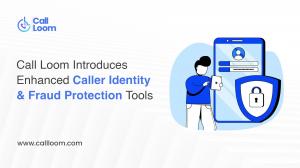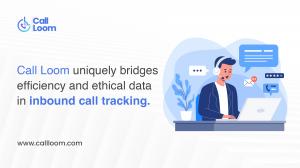Call Loom Introduces Enhanced Caller Identity & Fraud Protection Tools
According to the Federal Trade Commission, U.S. consumers reported more than $10 billion in losses from phone scams in 2024 alone, a figure that has tripled over the past five years. For businesses, the risk isn’t just financial, it’s operational. Spoofed calls and misidentified numbers have blurred the lines between genuine leads and fraudulent activity, leaving call centers, sales teams, and customer support departments struggling to separate signal from noise.
“Most companies still treat phone calls as simple inbound events,” said CEO of Call Loom.
He further added: “But the truth is, every call carries a digital fingerprint. If you can read it correctly, you can verify identity, prevent misuse, and protect both your customers and your brand reputation. That’s what this update delivers.”
In early pilot programs, Call Loom’s fraud detection module reduced invalid or spoofed calls by 41% within the first 60 days.
Unlike traditional call tracking tools that rely solely on static phone data, Call Loom’s new feature uses multi-layered caller verification, combining network-level signals, behavioral patterns, and device intelligence to flag anomalies before they reach the team. The result: fewer wasted minutes, fewer false leads, and more confident human interactions.
Our clients kept asking a question — ‘Can I trust the number on my screen?”
We replied: “This update is about giving a straight answer to that, backed by data, not guesswork.”
How It Works: Visibility Before the Voice
Behind every phone call lies a digital trail, routing metadata, carrier information, device signatures, and repeat behavior patterns. Most call tracking platforms collect this information only for reporting. Call Loom’s system interprets it in real time.
The new Caller Identity layer functions like an authentication check before a conversation begins. When a call arrives, the system quietly evaluates multiple parameters within milliseconds:
Origin consistency: Does the call’s source number align with historical patterns or geographic logic?
Carrier legitimacy: Has the number been associated with VoIP masking or recent spam clusters?
Frequency behavior: Is the caller exhibiting automated-dialer traits or reattempting abnormally fast?
Trust score synthesis: A weighted confidence model ranks each call from Verified to Suspicious, updating dynamically as new signals arrive.
If a call is marked as potentially fraudulent, teams don’t lose time — the call is flagged directly in the Call Loom dashboard, allowing managers to review, redirect, or label the contact for training and audit purposes.
Instead of relying on generic “spam likely” warnings, businesses now gain a forensic-level view of every inbound attempt, paired with Call Loom’s existing analytics — source tracking, QA scoring, and performance reports. It’s not about rejecting calls; it’s about restoring confidence in the ones worth answering.
Businesses using Call Loom’s secure call tracking platform reported a 22% drop in wasted agent time due to call misclassification.
Privacy, Compliance, and Responsibility
In an age of heightened sensitivity around data privacy, Call Loom’s secure call tracking platform was built with compliance as a foundational principle, not a later patch. The new Caller Identity and Fraud Protection suite follows global data protection standards, including GDPR, CCPA, and STIR/SHAKEN verification protocols to make sure that transparency and trust travel with every call.
Rather than storing raw caller information indefinitely, Call Loom applies data minimization by encrypting, timestamping, and automatically purging sensitive metadata within defined retention periods. This approach gives businesses full visibility into call origins and risk levels without compromising end-user privacy or regulatory alignment.
“Our philosophy is simple,” said the Head of Data Infrastructure at Call Loom. “Security can’t slow operations, and compliance can’t be an afterthought. The system is designed to prove that real-time intelligence and responsible data handling can exist in the same architecture.”
This balance; between insight and integrity, is what positions Call Loom as one of the few platforms bridging operational efficiency with ethical data management in inbound call tracking.
Looking Ahead: The Future of Trust in Calls
For most businesses, the phone remains the most direct line to a customer and yet, also the most vulnerable. As fraud tactics evolve and data breaches grow more sophisticated, advanced inbound call tracking has become more than a marketing function; it’s a security layer for the modern business ecosystem.
With the launch of its Caller Identity and Fraud Protection suite, Call Loom continues to move beyond traditional analytics, focusing on the foundation every brand depends on: the integrity of human connection. The company plans to extend these protections to outbound verification and partner integrations later this year, reinforcing its position as a trusted infrastructure provider for call-driven businesses.
“In a world of automation and noise, trust is what keeps people on the line,” Call Loom's vision. “Our goal isn’t to make calls faster, it’s to make them safer.”
Harvey
Call Loom
888-333-1442
harvey@callloom.com
Visit us on social media:
LinkedIn
Instagram
Facebook
YouTube
X
Legal Disclaimer:
EIN Presswire provides this news content "as is" without warranty of any kind. We do not accept any responsibility or liability for the accuracy, content, images, videos, licenses, completeness, legality, or reliability of the information contained in this article. If you have any complaints or copyright issues related to this article, kindly contact the author above.


